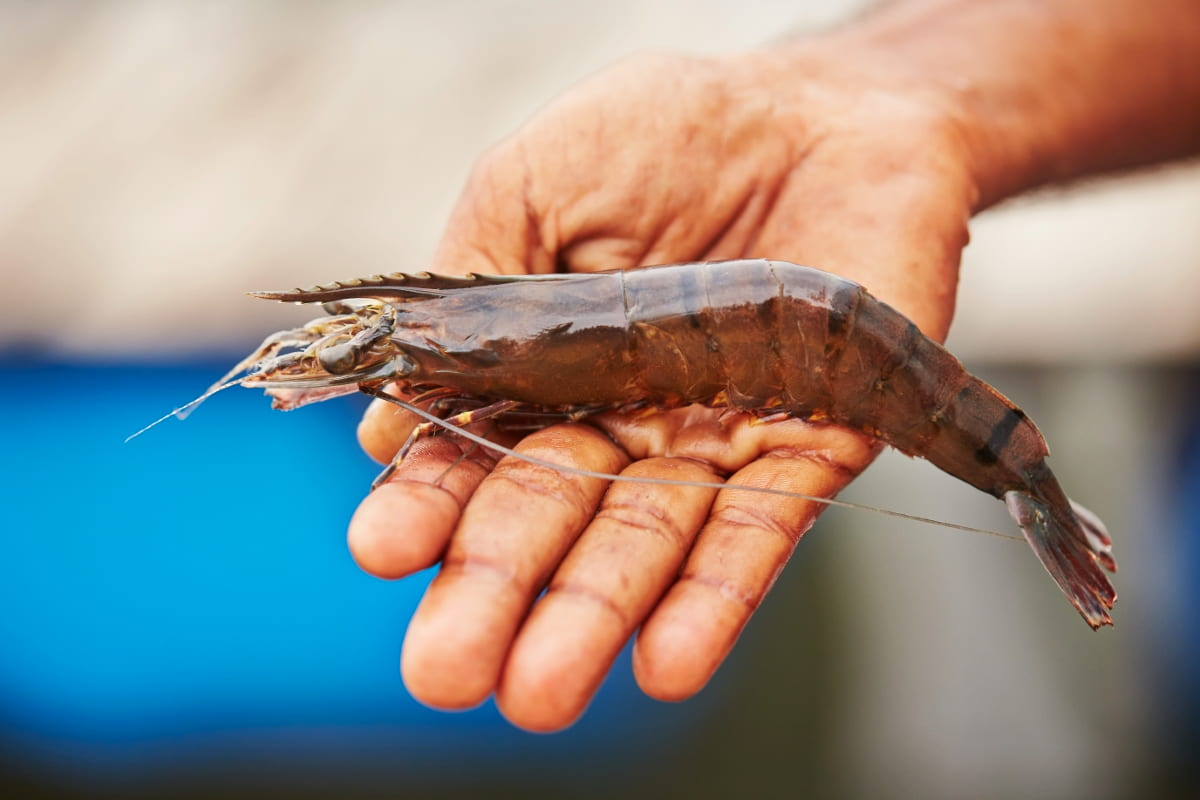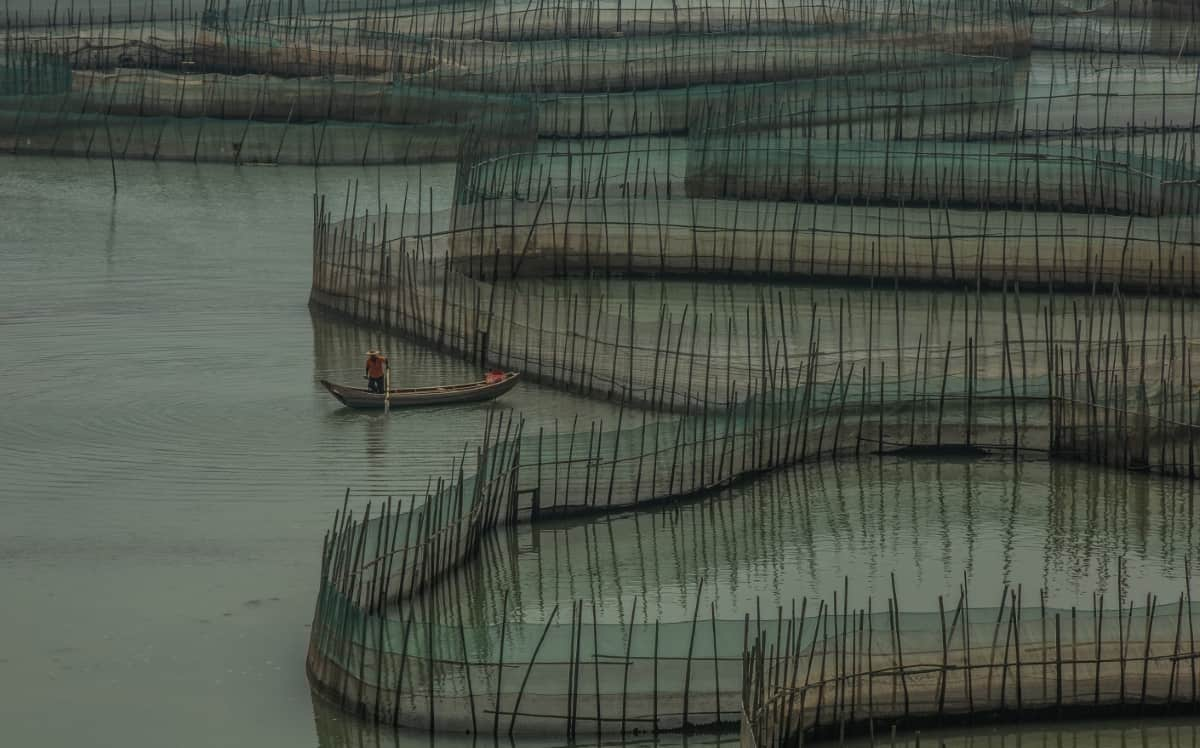Shrimp farming has become a lucrative business, drawing attention to its potential in domestic and international markets. A shrimp farming project report typically includes a detailed analysis of shrimp farming cost and profit economics, considering various factors like initial investment, operational expenses, and market dynamics.

With the growing popularity of prawn culture projects, many entrepreneurs are exploring the feasibility of shrimp farming profit per acre and the viability of prawn farming in tanks. Moreover, with advances in aquaculture technology, the scope of shrimp hatchery project reports has expanded, providing comprehensive insights into the industry.
Shrimp Farming Project Report
Initial Investment and Infrastructure Costs in Shrimp Farming
When starting a shrimp farming venture, the initial investment is a critical component to consider. This includes land acquisition or leasing, which, in India, may range from INR 2-5 lakhs per acre, depending on location and land quality. Constructing ponds or tanks, a significant part of the investment involves expenses for excavation, lining, fencing, and aeration systems, which can vary from INR 3-8 lakhs per hectare.
The initial phase also includes costs for shrimp seeds, with prices ranging between INR 2,000 to 5,000 per thousand seeds, depending on species and quality. These initial costs set the foundation for a successful shrimp farming operation, thus requiring careful planning and allocation of resources.
Operational Expenses and Variable Costs in Shrimp Farming
Once the shrimp farm is established, operational expenses come into play. Feed and nutrition expenses are substantial, with shrimp feed costs averaging INR 60-80 per kilogram. Labor expenses, including wages for various tasks such as pond preparation and harvesting, can range from INR 15,000-25,000 per month per hectare.
Water and electricity charges, crucial for maintaining optimal conditions in the ponds, typically range from INR 10,000-20,000 per hectare per month. Additionally, maintenance and operational costs, including pond maintenance, equipment upkeep, and transportation, can total around INR 20,000-30,000 per hectare annually. These variable costs are essential for the day-to-day running of the farm and can fluctuate based on several factors.
Market Analysis and Price Fluctuations in Shrimp Farming
The success of a shrimp farming venture significantly depends on market analysis and price fluctuations. The average selling price of farmed shrimp in India ranges from INR 300-600 per kilogram, influenced by size, quality, market demand-supply dynamics, and export opportunities.
Understanding these market factors is crucial for predicting revenue and strategizing for profitability. Revenue from shrimp farming, considering the yield (2-5 tons per hectare annually) and market prices, can be estimated at INR 12-30 lakhs per hectare. However, these figures are indicative and subject to change based on market conditions and input cost fluctuations.
Risk Management and Insurance Costs in Shrimp Farming
Risk management is integral to shrimp farming, involving strategies to mitigate potential losses. Insurance costs form a part of this, providing a safety net against unforeseen events like disease outbreaks or environmental disasters. While the cost of insurance varies, it is a necessary expense for protecting the investment and ensuring business continuity. Farmers must also consider other risk management practices, such as regular health checks for shrimp and maintaining optimal pond conditions, to minimize the risk of production losses.
In case you missed it: From Hatcheries to Harvest: Best Management Practices in Shrimp Farming

Labor Costs and Employment Considerations in Shrimp Farming
Labor costs form a significant portion of the operational expenses in shrimp farming. Employment considerations include the cost of hiring workers and training and retaining skilled labor. Wages for employees engaged in various activities like feeding, water quality management, and harvesting are crucial for the smooth operation of the farm. The labor costs, varying from INR 15,000-25,000 per month per hectare, also reflect the importance of human resources in maintaining farm productivity and efficiency.
Feed and Nutrition Expenses in Shrimp Farming
Feed and nutrition are the backbone of shrimp farming, accounting for most operational costs. The kind of food and its quality can really affect how shrimp grow and stay healthy, which, in turn, impacts how much and how good the shrimp you get will be. The cost of shrimp feed, which can range between INR 60-80 per kilogram, is influenced by factors like protein content and market price fluctuations. Efficient feed management practices are essential to ensure the shrimp are well-nourished while keeping the costs in check.
Technology and Innovation Impact on Shrimp Farming Economics
The impact of technology and innovation on the economics of shrimp farming cannot be overstated. Advancements in aquaculture technology, such as automated feeding systems, improved aeration techniques, and water quality monitoring tools, have significantly enhanced the efficiency and productivity of shrimp farming operations.
In case you missed it: Top 10 Common Mistakes to Avoid in Shrimp/Prawn Farming

These innovations lead to better growth rates, higher survival rates of shrimp, and more effective disease management, ultimately resulting in increased yields. However, the adoption of such technologies also entails additional investment costs. The initial outlay for high-tech equipment can be substantial, but the long-term savings and increased profits often offset these costs due to improved farm performance.
Environmental Regulations and Compliance Costs in Shrimp Farming
Shrimp farming must adhere to various environmental regulations, which aim to mitigate the impact of aquaculture on natural ecosystems. Following these rules means spending money to make sure farming doesn’t hurt nature. This includes investments in eco-friendly pond management systems, wastewater treatment facilities, and measures to prevent the contamination of local water bodies.
Additionally, obtaining the necessary permits and passing environmental impact assessments can incur administrative costs. While these expenses add to the overall cost of running a shrimp farm, they are essential for maintaining a sustainable operation that minimizes negative environmental impacts.
Economic Viability and Profitability Analysis of Shrimp Farming
Conducting an economic viability and profitability analysis is crucial for understanding the potential success of a shrimp farming venture. This analysis involves assessing all costs associated with setting up and running the farm, including land acquisition, infrastructure development, operational expenses, and compliance with environmental regulations.
It also involves projecting potential revenues based on factors like production yield, market prices, and the size and quality of the harvested shrimp. To calculate the profitability of shrimp farming based on the provided figures, let’s consider an average scenario. If we assume the farm is set up on one hectare of land, the initial investment would include land acquisition (let’s take an average cost of INR 3.5 lakhs per hectare) and construction of ponds or tanks (averaging INR 5.5 lakhs per hectare).
The annual operational costs would include shrimp seeds (assuming INR 3,500 for an average seed requirement per hectare), feed and nutrition (let’s say INR 70 per kilogram of feed with an estimated feed requirement), labor expenses (averaging INR 20,000 per month, totaling INR 2.4 lakhs per year), water and electricity (averaging INR 15,000 per month, totaling INR 1.8 lakhs per year), and maintenance and other operational costs (averaging INR 25,000 per hectare annually).
In case you missed it: How to Build Prawn/Shrimp Pond in 6 Steps: DIY Guide for Beginners

Adding these expenses, the total annual operational cost comes to approximately INR 13.93 lakhs per hectare (excluding the initial investment for simplicity). If the average revenue from selling shrimp is INR 20 lakhs per hectare (considering an average yield of 3.5 tons at INR 300 per kilogram), the profit would be the revenue minus the operational costs, equating to around INR 6.07 lakhs per hectare annually. This calculation, however, is a simplified estimation; actual profits can vary based on numerous factors like market price fluctuations, actual yield, and farm management efficiency.
Conclusion
The economics of shrimp farming encompass a complex interplay of factors, including initial investments, operational costs, market dynamics, and environmental compliance, all of which are crucial for determining the profitability and sustainability of this rapidly evolving industry. Careful analysis and strategic planning are essential for success in this challenging yet rewarding aquaculture sector.
- Feed Your Flock for Less: Top 10 Tips to Save on Chicken Feed
- Ultimate Guide to Ossabaw Island Hog: Breeding, Raising, Diet, and Care
- Hatching Answers: The Top 10 Reasons Your Chickens Aren’t Laying Eggs
- Eggs and Economics: Breaking Down the Cost of Raising Backyard Chickens
- Defend Your Greens: Proven Methods to Keep Iguanas Out of Your Garden
- Ultimate Guide to Cinnamon Queen Chicken: A Comprehensive Guide for Beginners
- Ultimate Guide to California Tan Chicken: Breeding, Raising, Diet, Egg-Production and Care
- Ultimate Guide to Marsh Daisy Chicken: Breeding, Raising, Diet, and Care
- 10 Types of Chicken Farming Businesses You Can Start for Profits